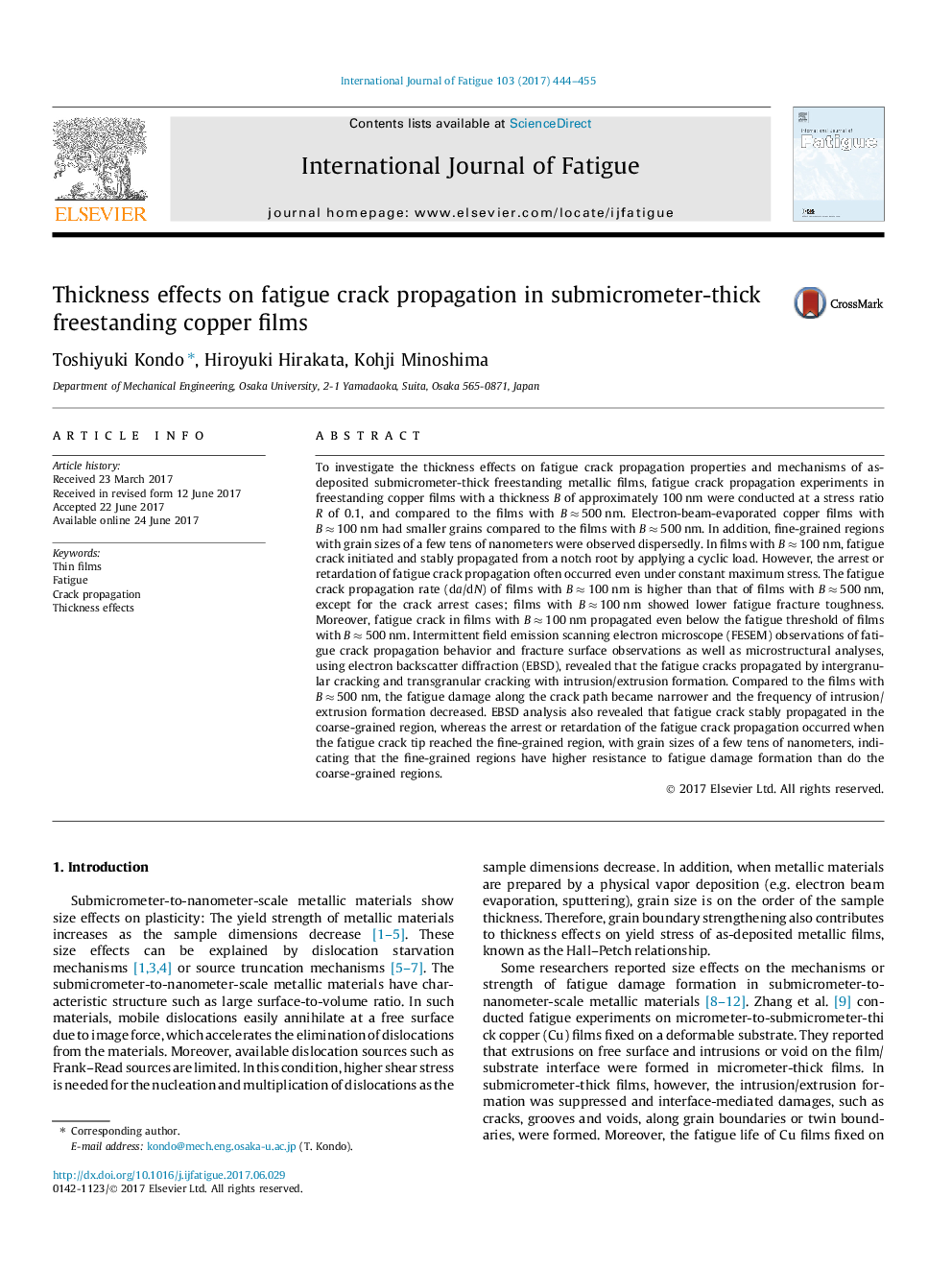| Article ID | Journal | Published Year | Pages | File Type |
|---|---|---|---|---|
| 5014974 | International Journal of Fatigue | 2017 | 12 Pages |
Abstract
To investigate the thickness effects on fatigue crack propagation properties and mechanisms of as-deposited submicrometer-thick freestanding metallic films, fatigue crack propagation experiments in freestanding copper films with a thickness B of approximately 100 nm were conducted at a stress ratio R of 0.1, and compared to the films with B â 500 nm. Electron-beam-evaporated copper films with B â 100 nm had smaller grains compared to the films with B â 500 nm. In addition, fine-grained regions with grain sizes of a few tens of nanometers were observed dispersedly. In films with B â 100 nm, fatigue crack initiated and stably propagated from a notch root by applying a cyclic load. However, the arrest or retardation of fatigue crack propagation often occurred even under constant maximum stress. The fatigue crack propagation rate (da/dN) of films with B â 100 nm is higher than that of films with B â 500 nm, except for the crack arrest cases; films with B â 100 nm showed lower fatigue fracture toughness. Moreover, fatigue crack in films with B â 100 nm propagated even below the fatigue threshold of films with B â 500 nm. Intermittent field emission scanning electron microscope (FESEM) observations of fatigue crack propagation behavior and fracture surface observations as well as microstructural analyses, using electron backscatter diffraction (EBSD), revealed that the fatigue cracks propagated by intergranular cracking and transgranular cracking with intrusion/extrusion formation. Compared to the films with B â 500 nm, the fatigue damage along the crack path became narrower and the frequency of intrusion/extrusion formation decreased. EBSD analysis also revealed that fatigue crack stably propagated in the coarse-grained region, whereas the arrest or retardation of the fatigue crack propagation occurred when the fatigue crack tip reached the fine-grained region, with grain sizes of a few tens of nanometers, indicating that the fine-grained regions have higher resistance to fatigue damage formation than do the coarse-grained regions.
Related Topics
Physical Sciences and Engineering
Engineering
Mechanical Engineering
Authors
Toshiyuki Kondo, Hiroyuki Hirakata, Kohji Minoshima,
